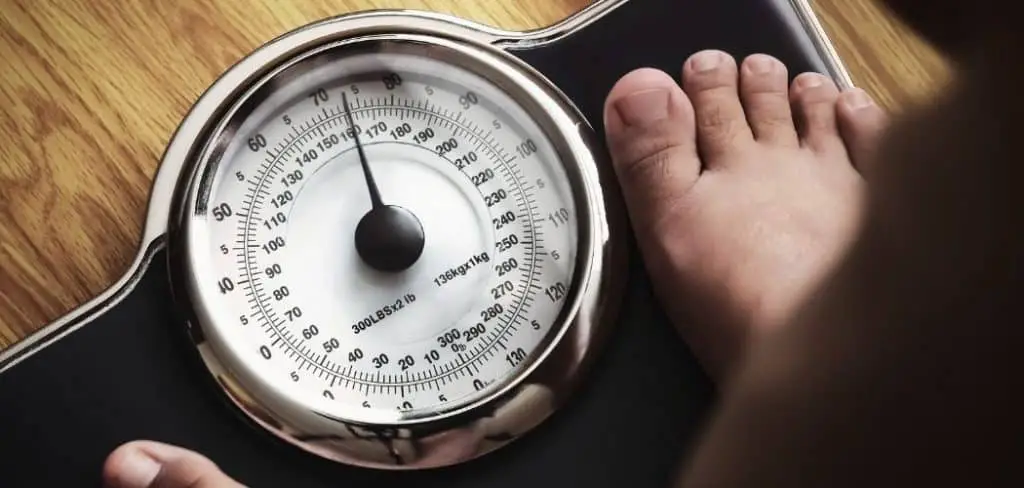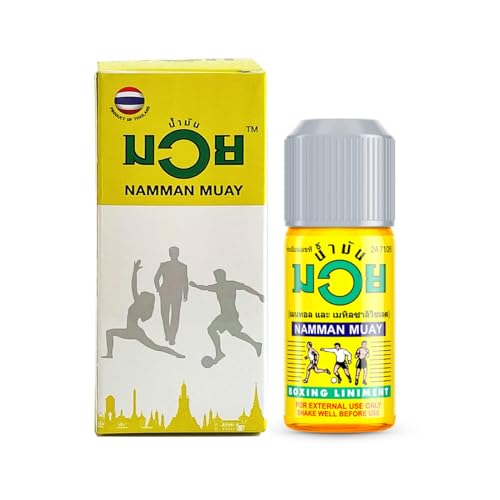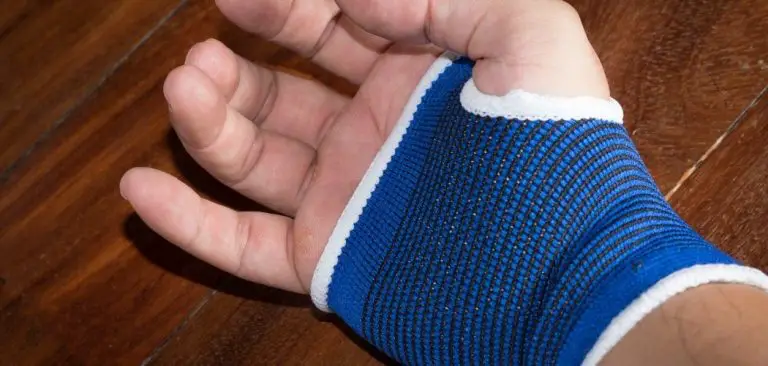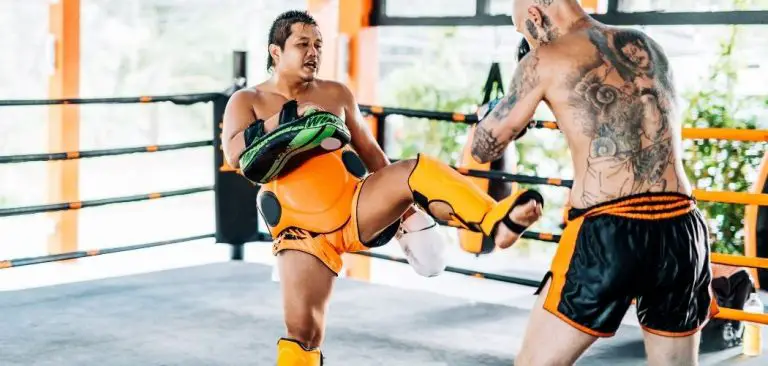In the ancient era, nobody cared about weight divisions. Two fighters were fighting toe-to-toe until one of them was unable to continue the bout.
But Thai boxing is nowadays a sport with a clear ruleset. Muay Thai weight classes and divisions exist for a reason.
How do officials check fighter’s class? Is the weigh-in happening on the day of the fight or one day before? If you don’t wanna get caught missing weight, please read more about Muay Thai weight classes and divisions.
Table of Contents
Why Do Weight Classes Exist?
The answer to this question is very simple. Physics class, elementary school. Let me clarify Newton’s Second Law of Motion to you.
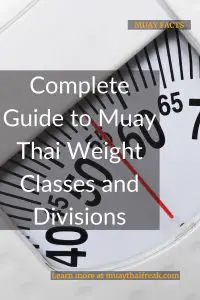
F (force) = M (mass) x A (acceleration)
This means a heavier fighter (more lean mass or just fat) hits harder for the same speed of impact.
Let me give you an example. When a heavyweight and atomweight fighter hit the heavy bag, of course, a big massive dude will hit harder, even though both of them are martial art masters. Why? The answer is so simple – greater mass leads to more powerful strikes.
Weight classes & divisions exist primarily due to fighters’ safety. You can’t pair a welterweight with a middleweight because he’d get hurt badly, plus it’d be a huge mismatch.
Even one pound can make a critical difference between two athletes in their primes (especially smaller weight classes).
Just to know, different promotions offer different weight classes. My advice is to read the invitation letter thoroughly or to check the divisions before the competition with a promoter. A weigh-in miss means you’ll probably go one division up (or disqualification, depending on the tournament rules). It leads to facing stronger opponents and a greater possibility of getting hurt or knocked out.
Muay Thai Weight Classes and Divisions – Differences Between Promotions
Before we start, all the weights are in pounds. If you want to transform pounds to kilograms, please divide the number by 2.205 (one kilogram equals 2.205 pounds, for example, 175 / 2.205 = 79,387 kg).
Note: in some competitions, you are allowed to weigh a bit more (for example, if the limit is 175 pounds, the tolerance might be +0.5 pounds, but please check with the tournament promoter).
WBC Muay Thai (World Boxing Council) + Elite Stadiums
Here is the list of weight classes in use at elite stadiums of Thailand (e.g. Lumpinee, Rajadamnern, etc.) and the WBC Muay Thai (World Boxing Council):
| Muay Thai Weight Classes & Divisions Names | Pounds |
|---|---|
| Mini Flyweight | 100 – 105 lbs |
| Junior Flyweight | 105 – 108 lbs |
| Flyweight | 108 – 112 lbs |
| Junior Bantamweight | 112 – 115 lbs |
| Bantamweight | 115 – 118 lbs |
| Junior Featherweight | 118 – 122 lbs |
| Featherweight | 122 – 126 lbs |
| Junior Lightweight | 126 – 130 lbs |
| Lightweight | 130 – 135 lbs |
| Junior Welterweight | 135 – 140 lbs |
| Welterweight | 140 – 147 lbs |
| Junior Middleweight | 147 – 156 lbs |
| Middleweight | 156 – 160 lbs |
| Junior Heavyweight | 160 – 175 lbs |
| Heavyweight | 175 lbs |
World Professional Muay Thai Federation (WPMF)
As well as you see, the World Professional Muay Thai Federation (WPMF) adopted different weight classes.
| Muay Thai Weight Classes & Divisions Names | Pounds |
|---|---|
| Pin Weight | 103 lbs |
| Mini Flyweight | 106 lbs |
| Light Flyweight | 109 lbs |
| Flyweight | 112 lbs |
| Super Flyweight | 115 lbs |
| Bantamweight | 118 lbs |
| Super Bantamweight | 122 lbs |
| Featherweight | 126 lbs |
| Super Featherweight | 130 lbs |
| Lightweight | 135 lbs |
| Super Lightweight | 140 lbs |
| Welterweight | 147 lbs |
| Super Welterweight | 154 lbs |
| Middleweight | 161 lbs |
| Super Middleweight | 168 lbs |
| Cruiserweight | 175 lbs |
| Super Cruiserweight | 190 lbs |
| Heavyweight | 210 lbs |
| Super Heavyweight | 265 lbs |
World Thai Boxing Association (Junior, Amateur, and Adult)
World Thai Boxing Association offers different weight classes too. So before you go to the competition, check the invitation at least two or three times.
| Muay Thai Weight Classes & Divisions Names | Pounds |
|---|---|
| Junior Pin Weight | 47 lbs |
| Junior Atomweight | 52 lbs |
| Junior Strawweight | 57 lbs |
| Junior Flyweight | 62 lbs |
| Junior Bantamweight | 67 lbs |
| Junior Featherweight | 72 lbs |
| Junior Lightweight | 77 lbs |
| Junior Welterweight | 82 lbs |
| Junior Middleweight | 87 lbs |
| Junior Cruiserweight | 92 lbs |
| Junior Heavyweight | +97 lbs |
| Welterweight | 147 lbs |
| Super Welterweight | 154 lbs |
| Middleweight | 161 lbs |
| Super Middleweight | 168 lbs |
| Cruiserweight | 175 lbs |
| Super Cruiserweight | 190 lbs |
| Heavyweight | 210 lbs |
| Super Heavyweight | 265 lbs |
| Girls/Boys Pin Weight | 102 lbs |
| Girls/Boys Atomweight | 107 lbs |
| Girls/Boys Strawweight | 112 lbs |
| Girls/Boys Flyweight | 117 lbs |
| Girls/Boys Bantamweight | 122 lbs |
| Girls/Boys Featherweight | 127 lbs |
| Girls/Boys Lightweight | 132 lbs |
| Girls/Boys Super Lightweight | 137 lbs |
| Girls/Boys Light Welterweight | 142 lbs |
| Girls/Boys Welterweight | 147 lbs |
| Girls/Boys Super Welterweight | 153 lbs |
| Girls/Boys Light Middleweight | 159 lbs |
| Girls/Boys Middleweight | 165 lbs |
| Girls/Boys Super Middleweight | 172 lbs |
| Girls/Boys Light Heavyweight | 179 lbs |
| Girls/Boys Light Cruiserweight | 186 lbs |
| Girls/Boys Cruiserweight | 195 lbs |
| Girls/Boys Heavyweight | 215 lbs |
| Girls/Boys Super Heavyweight | +215 lbs |
| Pin weight | 102 lbs |
| Atomweight | 107 lbs |
| Strawweight | 112 lbs |
| Flyweight | 117 lbs |
| Bantamweight | 122 lbs |
| Featherweight | 127 lbs |
| Lightweight | 132 lbs |
| Super Lightweight | 137 lbs |
| Light Welterweight | 142 lbs |
| Welterweight | 147 lbs |
| Super Welterweight | 153 lbs |
| Light Middleweight | 159 lbs |
| Middleweight | 165 lbs |
| Super Middleweight | 172 lbs |
| Light Heavyweight | 179 lbs |
| Light Cruiserweight | 186 lbs |
| Cruiserweight | 195 lbs |
| Heavyweight | 215 lbs |
| Super Heavyweight | +215 lbs |
Cutting Weight
In Muay Thai, every single pound matters. When two fighters are evenly matched, a stronger strike might make the difference and leave a better impression on judges. But how do fighters cut weight and how many pounds are considered “safe”? Please read on, I will explain it to you.

Many fighters go to the sauna or hot tube daily, one week before the fight, draining their bodies and reducing 10-15 pounds (some even cut more, but this is considered dangerous). Also, some ring warriors cut their rations a week or two before the fight. For example, despite somebody’s walking weight is 160 lbs, he can easily drop to around 140 lbs without endangering his health. But why do fighters do it?
In any martial art, extra pounds mean a lot. The weigh-in sometimes happens a day before the fight, which lets a fighter recover from a harsh weight loss. So a fighter who competes at 140 lbs (just an example) could weigh 155+ pounds on the day of the fight. So it is more than obvious that Muay Thai weight classes and divisions are not based on fighters’ walking weight.
Let me give you an example from the MMA world. Paulo Costa, the former UFC Middleweight title contender, weighed around 210-215 pounds for his 185-pound title fight versus Israel Adesanya on the day of the match. Ring warriors usually target “minimum weight that won’t endanger health”.
But some promotions insist on “fighting on walking weight” and control ring warriors one week ahead of the bout because of previous bad experiences. Famous MMA promotion ONE FC is a good example, they changed the policy after the death of Chinese flyweight fighter Yang Jian Bing, whose body was unable to handle massive weight loss in 2015.
There is no strict rule that bonds Muay Thai weight classes and divisions and walking weight yet, but it might change in the years to come.
Openweight And Fighting Above The Optimal Weight
Listen, pairing fighters from different Muay Thai weight classes and divisions can happen in an Openweight competition, and you might see it from time to time in some tournaments. Elite level competitors are sometimes ready to go up or accept challenges against heavier opponents.
Is fighting stronger and heavier foe allowed? Well, yes and no, it depends on a tournament. My advice – ask the promoter.
For example, Kaoklai Kaennorsing was known for fighting bigger opponents, but you need the heart of a lion and an insane level of bravery. Despite Kaoklai weighed only 172 lbs, he took part in Openweight battles with Heavyweight fighters.
The Thai fighter turned the lights out on Mighty Moe, who weighed 273 lbs the day of the fight! Moe was trying to march forward, but Kaoklai’s reaction time and footwork were out of this world. A fabulous right high kick counter stopped Moe’s weaving overhand right attempt.
Kaoklai also fought other famous heavyweight ring warriors at K-1 tournaments – Ray Sefo, Park Yong Soo, Hong Man Choi, Alexey Ignasov, Musashi, Mike Bernardo, Tsuyoshi Nakasako… He is the youngest and lightest fighter to win a K-1 Openweight tournament (2004).
Another elite-level Thai warrior, famous for knocking out heavier opponents, is Saenchai, a master of switch kick and scissor kick. Fighting 10 or 20 pounds heavier foes was a piece of cake for this fabulous Muay Thai legend.
Conclusion
I hope you got a clearer insight into Muay Thai weight classes and divisions after reading this article. I kindly recommend you to talk to promoters and read the invitation letters thoroughly. Surprises might affect your performance in the competition, get ready before the fight!
Please don’t forget, a few extra pounds might give you an advantage when you’re dealing evenly matched foe!
Last Updated on May 21, 2022 by Deni

